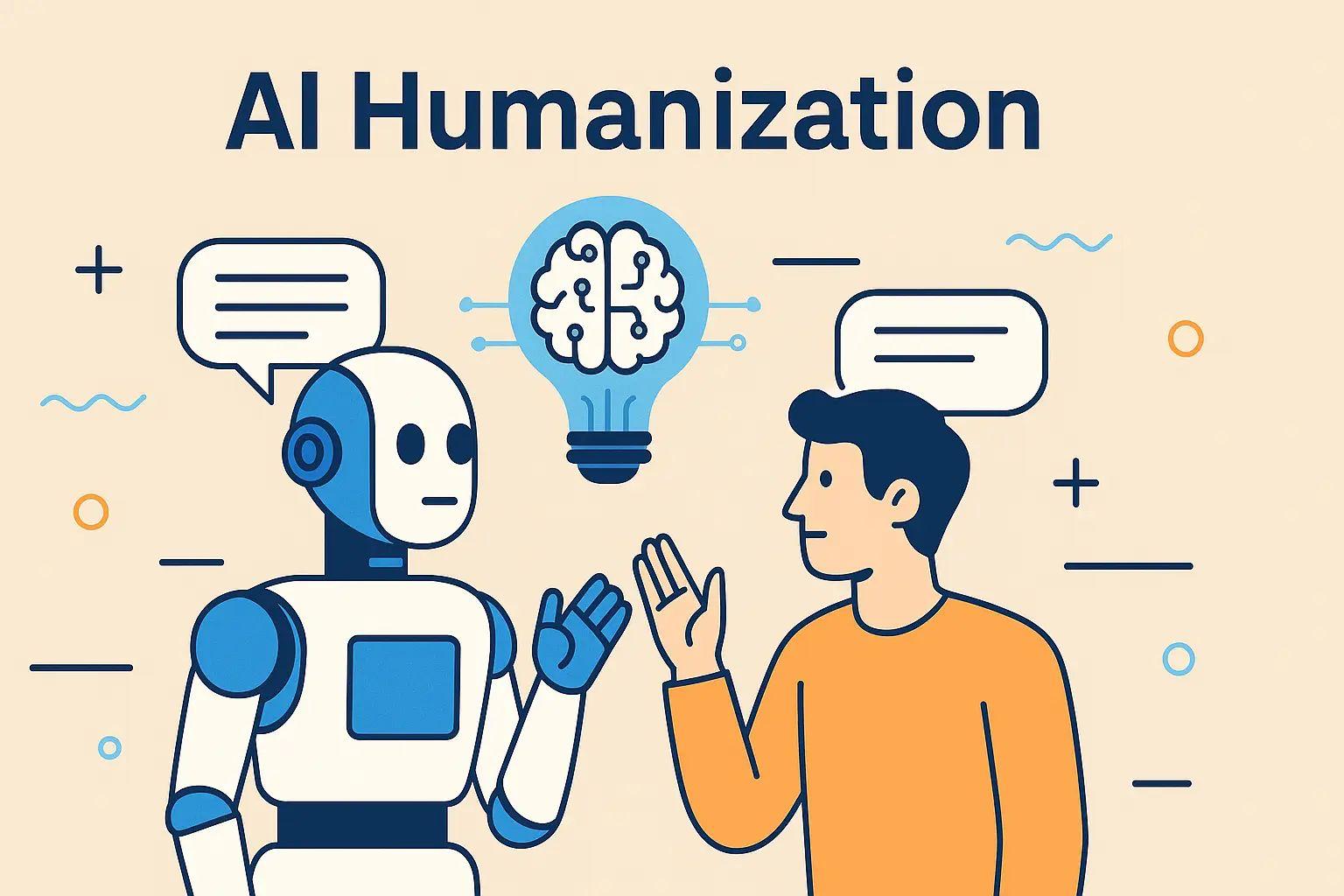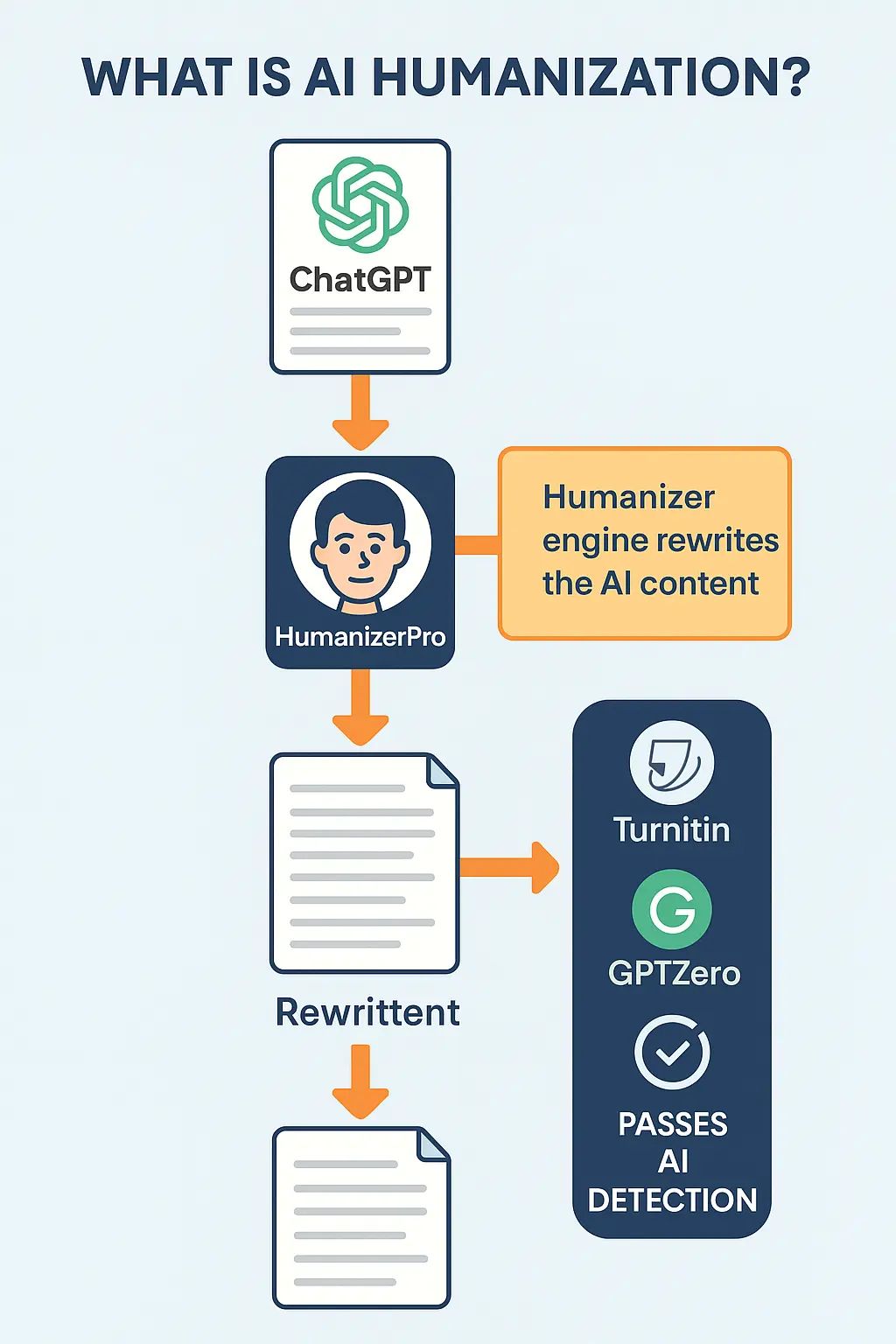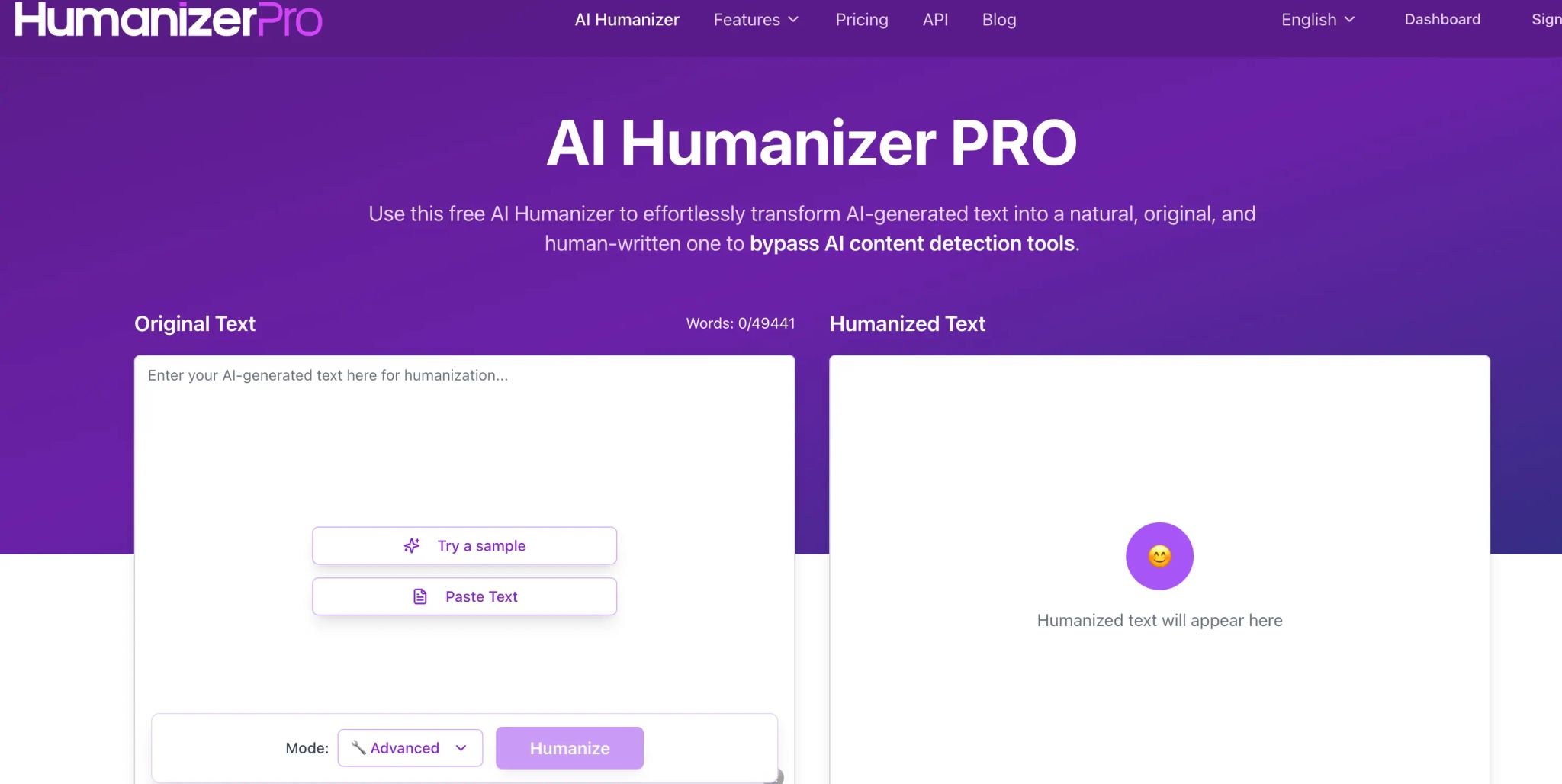What is AI Humanization? Meaning, Tools & Why It Matters (2025)
Learn what AI humanization means, how it works, and which tools help make AI text sound human. Bypass detection and boost clarity with real examples.

What is AI Humanization? Meaning, Tools & Why It Matters (2025)
AI humanization is the process of rewriting AI-generated content to sound natural and human-written. It improves clarity, structure and helps avoid AI detection.

How AI Humanization Works: From ChatGPT Content to Detection-Proof Text Using HumanizerPro — Rewritten Content That Passes Tools Like Turnitin and GPTZero
By adjusting sentence flow and word choices, it creates content that builds trust and feels more real.
Why Is AI Humanization Important?
AI-generated content is now everywhere—blogs, school assignments, product descriptions, and emails. But it often sounds robotic. Tools like Turnitin, GPTZero, and Originality AI are built to detect AI-written text, which can create problems for marketers, students, and writers.
Humanization helps by transforming AI-written content into something that sounds real. It’s especially useful for:
- Creating engaging blog posts and social media copy
- Avoiding AI detection in academic and professional settings
- Boosting SEO through more human-friendly writing
- Enhancing credibility and emotional connection
For a deeper dive, read What Is AI Plagiarism?
How Human Writing and AI Text Differ
AI detection tools often look at patterns like:
1. Burstiness
Humans vary their sentence lengths—short, long, and mixed. AI tends to write in even, repetitive rhythms.
2. Perplexity
Human writing tends to use surprising or creative word choices. AI models often repeat familiar patterns, resulting in more predictable content.
| Characteristic | Human Writing | AI Writing |
|---|---|---|
| Burstiness | High variation | Uniform patterns |
| Perplexity | Less predictable | More formulaic |
| Style | Natural and emotional | Flat or overly formal |
These markers help tools like GPTZero catch robotic writing patterns. But watermarking goes a step further.
Watermarking and Detection Layers
Some detection tools use watermarks—hidden signals in the structure of AI text. These markers help detect content even after it has been edited. Tools like Turnitin AI Checker and Copyleaks look for these patterns and structural similarities.
Writers often turn to AI humanizers to bypass these systems. Tools such as RewriterPro apply tone shifts and sentence restructuring to remove these hidden patterns.
For educators and institutions, understanding these methods is crucial. Learn more in Turnitin AI Detection Tested
Real-World Applications
Marketing and SEO Content
AI humanization is widely used in digital marketing. Marketers rewrite AI output to create landing pages, product listings, blog content, and ad copy that feels real and performs better.
It also helps content rank higher by improving natural flow and engagement metrics—important factors for SEO. See our blog: Best AI Humanizers Compared (2025)
Academic and Creative Writing
Students and writers can use humanizers to rewrite AI-generated essays, research, and fiction drafts in a more readable and original style.
“My AI essays now read so naturally that they pass both peer review and plagiarism checks. Lifesaver.” – Sarah, Student
Business and Internal Communications
In professional environments, AI tools help rewrite emails, reports, and proposals to sound clear and human. This improves how teams and clients communicate.
| Use Case | Example | Benefit |
|---|---|---|
| Internal Memos | Announcements | Better tone and clarity |
| Client Emails | Proposals, onboarding | Sound more trustworthy |
| HR Docs | Policies, job descriptions | More approachable language |
| Sales | Outreach campaigns | Higher response rates |
“We now rewrite all AI-drafted content before sending. Engagement is way up.” – Michael, Marketing Manager
Tool Spotlight: AI Humanization Platform Features

HumanizerPro’s AI Humanizer Editor.
One popular option is this AI text humanizer, which rewrites AI content with tone variation, structure changes, and detection-safe results.
Key Features:
- Multi-language rewriting
- Built-in AI detection
- Plagiarism-safe output
- Tone and flow adjustments
- 3-day refund guarantee
You can compare it with other tools in our post on AI Humanizers vs Paraphrasing Tools
Plans range from small use (15,000 words/month) to high-volume rewriting for agencies and businesses.
How It Compares to Detection Tools
| Feature | AI Humanization Tools | Detection Tools (e.g. GPTZero, Turnitin) |
|---|---|---|
| Main Purpose | Rewrite AI content | Flag AI-written content |
| Can Bypass Detection | Often, yes | Not applicable |
| Accuracy Metrics | Focused on human tone | Use burstiness/perplexity |
| Supports Multiple Languages | Yes | Varies |
| Use Case | Writers, students, marketers | Teachers, employers, platforms |
You can also explore how these tools perform in edge cases in the Stealth Writer AI Review
Final Thoughts
AI humanization is more important than ever. Whether you're trying to publish, persuade, or pass detection, your content needs to feel human.
The best tools don't just change words—they rewrite content using natural flow, diverse rhythm, and varied tone. That helps avoid flags from systems like GPTZero and Turnitin while keeping your message clear.
If you're working with AI-generated content, make sure you revise and humanize it properly using trusted methods. The future of content depends on how well we blend machine efficiency with the human touch.
Frequently Asked Questions (FAQs)
1. What is AI humanization?
AI humanization is the process of rewriting AI-generated text so it sounds like natural human writing. It improves clarity, tone, and structure while helping content avoid AI detection tools.
2. Why do people use AI humanizers?
Writers use AI humanizers to make AI-generated content more readable, trustworthy, and engaging. These tools are also used to bypass AI detectors like GPTZero and Turnitin.
3. How can I make AI text sound more human?
You can use tools that adjust sentence length, vary tone, and change word choices to match natural writing patterns. Some tools also avoid detection using watermark removal.
4. Are AI humanization tools ethical?
Yes, if used to improve readability or clarity without misrepresenting authorship. Many tools include plagiarism checks and fact-verification features.
5. Can AI detectors still catch humanized text?
It depends on the tool and how well the content is rewritten. Strong humanizers that change burstiness and perplexity can bypass many detectors, but no method is 100% guaranteed.

Kamran Khan
Kamran Khan is the founder of AI Humanizer PRO and a leading voice in the ethical use of AI-generated content. With years of hands-on experience in AI, SEO, and digital publishing, he built HumanizerPro to help creators and professionals turn robotic AI text into clear, human-like writing that meets real-world standards.